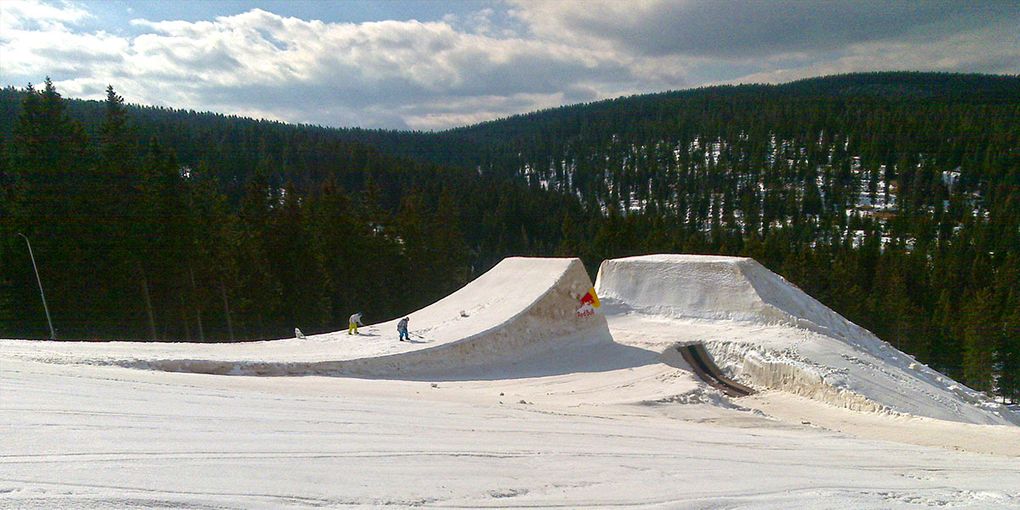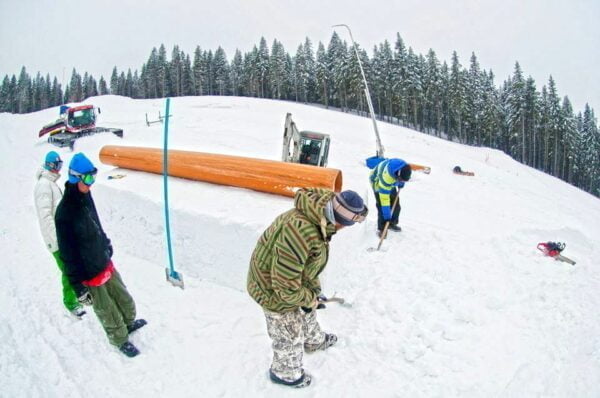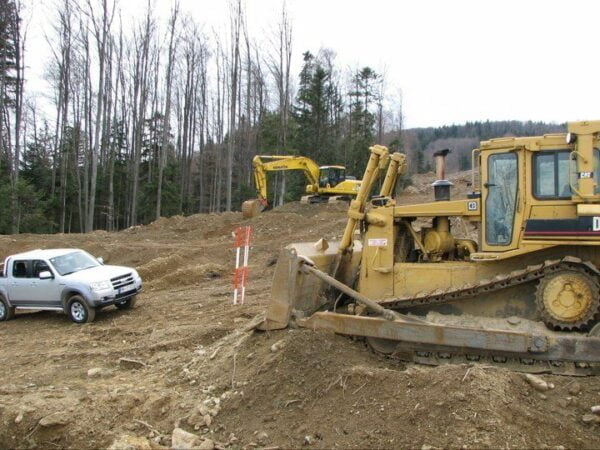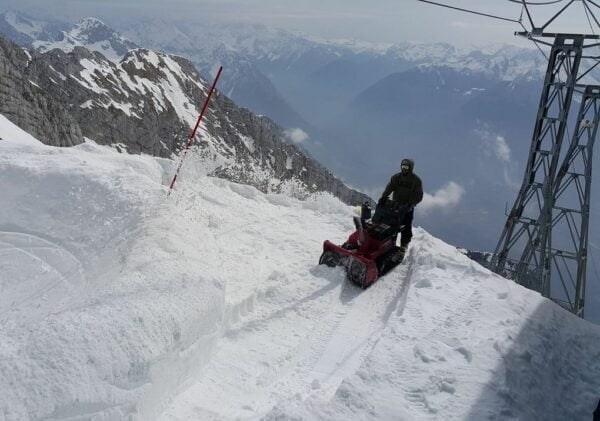
Big jumps
Snowboarding and freeskiing are constantly progressing at a fast rate which also requires development of new, innovative infrastructure which enables further progression of these two sports. Jumps have always been one of the most important elements of both sports, which encouraged construction of big kickers that provide adequate air time for most demanding tricks.
Jumps are also the most attractive features of these sports, especially as they require advanced skills and have a greater risk factor than some other obstacles that can be found in the terrain park. Most terrain parks already include jump features on different difficulty levels, where most of these features are dedicated to beginner and intermediate riders as they provide as much as 80% of all users of jump features. Consequently terrain parks lack in expert jump features or »big kicker lines«, which are being used by approximately 20% of visitors and furthermore require much more work than smaller obstacles as they are based on large amounts of earth and snow.
That are the most common reasons on which resorts decide to skip bigger jump features, however it seems that the resorts often forget some crucial facts such as that these 20% (as with other type of customers we can rely on 80% – 20% rule also in these case) of terrain park visitors represent best and even pro riders, which are training in the park on daily basis and can be a huge contribution to your marketing and communication activities as they are renown and respected among snowboard and freeski community.
Apart from that they attract media attention and viral exposure of terrain park they use. Big jumps are also an inspiration and motivation to other visitors of terrain parks who can see what they could achieve if they continue to develop their skills, which means that they will visit the park more frequently. Apart from additional exposure of the park through the photo and video shootings, bigjump features also provide an ideal set up for organization of different events, competitions and camps on the highest level which will boost communication efforts with terrain park visitors and increase profitability of the park in longer term.
SAFETY CONSIDERATIONS AND TECHNICAL ASPECTS
To overcome big gaps and steep takeoffs, riders require speeds as high as 100 km/h or in some cases even higher. High speeds in combination with large gaps between take off and landing can be a dangerous combination which is also statistically supported, as research of terrain park injuries shows, most of these injuries are result of jumping activities. Most of these accidents/injuries can be prevented by development of an infrastructure that is based on extensive engineering and design, rather than on personal evaluations, which also contributes to increased efficiency and reduced costs of construction and maintenance. As big jumps require huge amounts of snow which can exceed 10.000 m3, the amount of snow is compensated with earth movings which provides a base platform which is upgraded by a layer of snow during the season. When the jump is based on platform made out of dirt, precise engineering is even more important as this platform defines the final shape and other characteristics of jump.
PROFESSIONAL DEVELOPERS
Contracting a specialized company for the development of terrain park is strongly advised, especially in the case of bigger jump features, as these companies have adequate knowledge and experiences to design proper transitions of the takeoff and landing, position the jump feature on the part of the terrain park where it is possible to gain the necessary speed, develop precise plans for earth moving and in the end take care of the construction of the jump out of snow. To design the big jump feature it takes more than personal evaluation and perceptions as the takeoff height, its angle, transition, distance to knuckle, etc have to be precisely calculated to ensure safe and optimal performance of the jump.
From the developer of any jump feature, specially bigger ones, you should require precise plans, calculations of all jump parameters including needed speed and predicted impacts for different flight curves.
Proper design is even more important when we conceder various snow and wind conditions which have a big effect on the performance of jump, as the speed needed to the landing can increase or decrease for as much as 15 km/h or more. To achieve more air time and high flight curves, the takeoff should be steeper which consequently leads to higher impact on the landing, In order to decrease the impact on rider and injury rate during the landing, it should be steep enough, usually around 35 degrees on the big jumps.
Sweet spot is the part of the landing where the impact on the rider is minimal and below the forces that may cause the injuries. Sweet spot should be at least 7m long and the transition of the landing should be made in a way that the pressure is evenly distributed.
MAINTENANCE
Big jumps have to be inspected and maintained on a daily basis or even more frequent as even small bumps can affect their performance and can cause an accident. Even though the maintenance of steep landings requires a snow cat with a winch and another snow cat, that should not be the reason for lack of maintenance. It is vital that the big jump features are properly maintained, so you have to consider all these aspects when deciding for such features in your terrain park. Big jump features are one of the strongest marketing tools that you can use for your terrain parks as they will provide you with more exposure among your target group and will consequently attract more visitors to your park. However big jumps will also bring more responsibility for the development and maintenance of these features. Some resorts are not willing to include these features in their parks because of the higher injury rates on these obstacles, with professionally developed infrastructure, regular maintenance and safety awareness programs however, these risks can be successfully managed.


